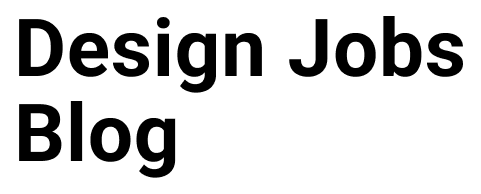
How to Secure a Remote Graphic Design Job in Tech
Remote graphic design jobs offer the perfect blend of creativity, flexibility, and lucrative opportunities, especially within the tech industry. However, the job market is tough and the competition is fierce. Many companies also have return to office orders, causing the availblity of remote roles to be more scarce. If you want to land a remote role at a tech company, your resume and portfolio must be optimized for success. This guide will help you craft an application that stands out, leveraging industry best practices and ATS keyword-friendly strategies.
Optimizing Your Resume for Remote Graphic Design Jobs in Tech
Tech companies value results, problem-solving, and adaptability. Your resume should reflect these qualities with a clean, structured format and data-backed achievements. Here’s what to focus on:
- Tailored Experience: Highlight design work relevant to tech, such as UI/UX projects, mobile app design, SaaS branding, and website interfaces.
- Impact-Driven Bullet Points: Use measurable results to showcase your contributions. Instead of saying, “Designed landing pages,” say, “Designed conversion-optimized landing pages that increased sign-ups by 30%.”
- Technical Skills & Design Tools: List proficiency in essential tools like Figma, Sketch, Adobe Creative Suite, and no-code platforms like Webflow or Framer.
- Collaboration & Communication: Remote work requires seamless communication. Highlight your experience working with cross-functional teams, including developers, marketers, and product managers, across different time zones.
- Keyword Optimization for ATS: Many tech companies use Applicant Tracking Systems (ATS) to filter resumes. Use relevant keywords from job descriptions—such as "remote graphic designer," "UI/UX design," or "web design"—to increase your chances of passing ATS scans.
Creating a Standout Graphic Design Portfolio for Tech Companies
Your portfolio is your ultimate proof of expertise. Here’s how to ensure it’s optimized for tech job opportunities:
- Showcase Problem-Solving Skills: Tech companies value designers who can think strategically. Structure your case studies using the problem-solution-impact format to demonstrate your design thinking approach.
- Keep It Concise & Visually Engaging: Recruiters scan quickly. A clutter-free, intuitive layout with high-quality visuals is key.
- Highlight Metrics Where Possible: If your work led to increased engagement, conversions, or retention, mention it with concrete data. Example: "Redesigned an e-commerce site, resulting in a 25% increase in checkout completion rate."
- Demonstrate Range & Specialization: Show versatility in design styles while emphasizing a niche—such as SaaS UI/UX, mobile app interfaces, or branding for tech startups.
- Optimize for SEO: Use keywords like "best graphic design portfolio for tech jobs," "remote UI/UX designer portfolio," and "modern web design showcase" to make your portfolio searchable.
- Include a Personal Touch: Add a short about section explaining your design philosophy, what excites you about working in tech, and links to your LinkedIn or Dribbble profile.
What If You Don’t Have Strong Metrics?
Not every designer has access to performance analytics. If you lack hard metrics, here’s what to do:
- Use Alternative Indicators: If you don’t have conversion rates, showcase usability feedback, engagement improvements, or client testimonials.
- Leverage Personal Projects: Showcase self-initiated projects that solve real-world problems. Mock redesigns of existing tech products (e.g., "How I Would Redesign Spotify's Mobile App") can make a great addition.
- Gather Testimonials: Positive feedback from clients, employers, or colleagues can be just as persuasive as metrics.
- Focus on Your Design Process: Detail your design thinking approach, user research methodologies, and the rationale behind your design choices.
Final Thoughts on Landing a Remote Graphic Design Job in Tech
Breaking into the tech industry as a remote graphic designer requires a strategic approach. Optimize your resume and portfolio to highlight problem-solving skills, measurable impact, and adaptability. If you lack hard metrics, focus on storytelling, case studies, and client feedback. With a well-crafted application and persistence, you’ll be well on your way to landing a high-paying remote graphic design job in tech.


